Operation Must Use An Updateable Query
An updateable query is a crucial aspect of database management systems, allowing users to modify and update data within a database. It refers to a query that has the capability to update, delete, or insert records into specified tables. An operation must use an updateable query to ensure that changes made to the data are correctly reflected in the database.
Understanding the Concept of an Updateable Query
In the realm of database management, queries serve as a means to interact with databases, retrieve information, and perform various operations on data. An updateable query is designed specifically for modifying data within a database. It allows users to insert new records, update existing ones, or delete unwanted data. This type of query is essential for ensuring that up-to-date and accurate information is stored in the database.
Advantages of Using Updateable Queries in Operations
1. Efficient Data Manipulation: Updateable queries simplify the process of modifying data, making it quick and efficient. Users can update multiple records simultaneously, reducing manual effort and potential errors.
2. Improved Data Integrity: By using updateable queries, it is easier to maintain data integrity within the database. Constraints and validations can be enforced during the update process, ensuring that data remains consistent and valid.
3. Enhanced Productivity: Updateable queries streamline workflow processes by allowing users to perform bulk updates, saving time and effort. This can lead to increased productivity and improved overall efficiency.
4. Flexibility in Data Modification: Updateable queries offer flexibility in terms of modifying data. Users can update specific records based on certain criteria or perform complex operations such as joining multiple tables to update data across different entities.
Common Use Cases for Updateable Queries
1. Data Maintenance: Updateable queries are commonly used for routine data maintenance tasks, such as updating employee details, customer information, or product pricing.
2. Data Migration: When migrating data from one database system to another, updateable queries can be utilized to map and update the data to fit the new structure and scheme.
3. Application Development: Developers often use updateable queries to implement various features and functionalities of an application, where data modification is required, such as user account management or content editing.
Important Considerations when Implementing Updateable Queries
1. Security: It is crucial to ensure that only authorized users have access to updateable queries to prevent unauthorized changes to the database. Implementing appropriate security measures and user permissions is essential.
2. Error Handling: Updateable queries should be accompanied by proper error handling mechanisms. This includes validating input data, handling exceptions, and providing meaningful error messages to users.
3. Backup and Recovery: Database backups should be regularly performed to safeguard against any potential data loss or corruption caused by updateable queries. In the event of an error or unintended modification, a backup allows for easy restoration of the database.
Steps to Create and Execute an Updateable Query
1. Define the Query: Determine the specific operation to be performed, such as updating records or inserting new data. Construct the query using the appropriate syntax.
2. Connect to the Database: Establish a connection to the database using a database management system or programming language that supports database operations.
3. Execute the Query: Pass the updateable query to the database, ensuring that the query is executed successfully.
4. Verify Results: Check the database to ensure that the intended modifications have been made accurately. Verify that the data integrity is maintained.
Best Practices for Optimizing Updateable Queries
1. Use Indexes: Indexes can significantly improve the performance of updateable queries. Analyze the query and identify columns that are used in conditions or joins, and create appropriate indexes on those columns.
2. Batch Updates: If possible, perform updates in batches rather than individually. This reduces the overhead of multiple round trips to the database and improves overall performance.
3. Optimize Query Structure: Review and optimize the structure of the updateable query to minimize unnecessary joins and conditions. Simplify the query to ensure it performs efficiently.
Potential Challenges and Troubleshooting Techniques for Updateable Queries
One common challenge when using updateable queries is encountering the error message, “This recordset is not updateable. Operation must use an updateable query.” This error often occurs when trying to update data in a query that contains aggregate functions, joins, or subqueries that make it non-updateable.
To troubleshoot this issue, consider the following:
1. Check Query Syntax: Ensure that the updateable query is constructed correctly, following the syntax rules of the database management system.
2. Review Query Structure: Verify that the query does not contain complex subqueries or aggregate functions that render it non-updateable. Simplify the query structure if possible.
3. Revise SQL Statements: In some cases, converting complex UPDATE statements into simpler forms, such as using separate SELECT and UPDATE statements, can resolve the issue.
4. Check User Permissions: Verify that the user executing the query has appropriate permissions to modify data in the specified tables.
FAQs
Q: What does it mean when a recordset is not updateable?
A: When a recordset is not updateable, it means that modifications cannot be made to the data using the current query. This often occurs when the query involves complex operations or conditions that render it non-updateable.
Q: How can I make my query updateable?
A: To make a query updateable, ensure that it follows the syntax rules of the database management system and avoids complex subqueries or aggregate functions. Additionally, the user executing the query should have appropriate permissions to modify the data.
Q: Why should I use updateable queries in operations?
A: Updateable queries offer efficient data manipulation, improved data integrity, enhanced productivity, and flexibility in data modification. They are essential for maintaining accurate and up-to-date information within a database.
Q: Can I update data in multiple tables using an updateable query?
A: Yes, it is possible to update data in multiple tables using updateable queries. This can be achieved by using appropriate join statements and specifying the relevant tables in the query.
Q: What should I do if I encounter the error “This recordset is not updateable. Operation must use an updateable query”?
A: If you encounter this error, check the query syntax, review the query structure to avoid complex operations, revise SQL statements, and ensure that the user executing the query has the necessary permissions to modify the data.
Etimetracklite Login Errors || Etimetracklite Common Error || Operation Must Use An Updateable Query
What Is The Description Operation Must Use An Updateable Query?
In computer programming, databases are crucial for storing and managing vast amounts of data efficiently. One critical aspect of database management is the ability to update and modify existing records. To accomplish this, programmers often use updateable queries. However, there are certain circumstances when a description operation must use an updateable query. In this article, we will delve into the concept of the updateable query, specifically focusing on situations where the description operation necessitates its usage.
Understanding Updateable Queries
Before we explore why a description operation requires an updateable query, it is essential to understand the basics of updateable queries. Simply put, an updateable query is a database operation that allows for modifying, deleting, and inserting data into a database. These queries play a significant role in database management systems and are widely used in various programming languages.
Updateable queries typically employ SQL (Structured Query Language), a popular language used for managing and manipulating databases. They allow programmers to modify data in the database tables, making them highly flexible and adaptable. By utilizing updateable queries, developers can update specific fields in existing records, delete unwanted data, or insert new information, ensuring the database remains accurate and up to date.
Description Operation and Its Necessity for Updateable Queries
In database management, a description operation refers to the retrieval of records from the database based on certain criteria. In simpler terms, it involves searching for specific data in a database table. Description operations are typically achieved through a SELECT query, which allows developers to retrieve data from tables that meet specified conditions.
While SELECT queries are generally intended to retrieve data, in certain situations, it becomes necessary to update the retrieved records. This is where an updateable query comes into play. In the context of a description operation, an updateable query enables developers to not only retrieve but also modify the desired records.
Consider a scenario where an e-commerce website keeps track of its customers’ orders in a database. If the website administrator wants to find all orders placed in the last 24 hours, a SELECT query would be used to identify those specific records. However, if the administrator also wishes to update the status of these orders, an updateable query is needed. Only through an updateable query can the administrator modify the retrieved records and mark them as “processed” or “shipped.”
Updateable queries apply to situations where retrieving data is not the sole requirement but also updating, deleting, or inserting data is essential. When the intention is to modify specific records coinciding with a description operation, using an updateable query proves indispensable.
FAQs:
1. Are updateable queries exclusive to SQL-based databases?
No, updateable queries can be used in any database management system capable of altering data, regardless of the programming language or technology used.
2. Can updateable queries pose any security risks?
As with any database operation, proper security measures must be followed to prevent unauthorized access or manipulation of data. Developers should ensure the application is protected against SQL injection attacks and implement appropriate authentication and authorization mechanisms.
3. What are some common applications of updateable queries?
Updateable queries are extensively used in various domains such as e-commerce, banking, social media, and content management systems. These queries enable developers to make real-time updates to data, ensuring accurate and up-to-date information.
4. Are there alternatives to using updateable queries for modifying retrieved records?
Yes, there are alternatives to updateable queries. For instance, developers can retrieve the required records using a SELECT query and then iterate over the result set, applying the necessary modifications one by one. However, this approach is often less efficient and more time-consuming compared to using an updateable query.
5. Can any SELECT query be converted into an updateable query?
No, not all SELECT queries can be directly transformed into updateable queries. Certain conditions and considerations need to be met to ensure the query is updateable. These conditions often involve the presence of a primary key or unique identifier and adherence to referential integrity constraints.
In conclusion, updateable queries play a pivotal role in modifying and updating data in databases. While typically used for more general purposes, there are situations when a description operation necessitates an updateable query. By allowing developers to retrieve and modify specific records in one go, updateable queries enhance efficiency and simplify the process of updating data in databases. Understanding the concept of updateable queries and their relevance to description operations is vital for efficient database management.
Why Is My Access Update Query Not Updateable?
Microsoft Access is a powerful tool that allows users to store, manage, and manipulate data efficiently. One common issue users may encounter is when their update query becomes non-updateable. This can be frustrating, as it prevents users from making changes to their data. In this article, we will explore the reasons why an Access update query may not be updateable and discuss possible solutions.
What is an update query?
Before diving into the reasons why an update query may not be updateable, let’s briefly explain what an update query is. In Microsoft Access, an update query is used to modify existing records in a table. It allows users to update one or more fields in a table based on specific criteria.
Reasons for a non-updateable query:
1. Complex queries:
One reason why an update query may not be updateable is due to its complexity. If the query includes multiple tables with linked or calculated fields, Access might struggle to determine the appropriate changes to make. In these cases, Access may block the query from being updated to prevent unexpected or incorrect modifications to the data.
2. Inconsistent data:
Another common cause of non-updateable queries is inconsistent data within the table. Access relies on unique indexes to identify and update specific records in a table. If there are duplicates or inconsistencies in the data within the fields used for indexing, Access may prevent updates to avoid ambiguity and data integrity issues.
3. Relationships and referential integrity:
Access relational databases often use relationships between tables to maintain referential integrity. Referential integrity ensures that relationships between tables are consistent and valid. If an update query violates this integrity by attempting to update a field that is part of a relationship, Access may prevent the update to protect the consistency of the database.
4. Read-only database:
Sometimes, the database itself may be set as read-only, meaning no modifications can be made to it. This could occur if the database is stored on a read-only media, such as a CD-ROM, or if the user does not have the necessary permissions to modify the database.
5. Insufficient user privileges:
Access allows database administrators to set permissions and privileges for users. If a user does not have the necessary privileges to perform updates, Access will restrict the update query to maintain data security and integrity. In such cases, reaching out to the database administrator to grant appropriate write permissions may resolve the issue.
Solutions and Workarounds:
Now that we have identified various reasons why an update query may not be updateable, let’s explore some possible solutions and workarounds:
1. Simplify the query:
If a query is too complex, try simplifying it by removing unnecessary joins or calculations. By reducing the complexity of the query, Access will have an easier time determining how to update the data, increasing the chances of it being updateable.
2. Ensure consistent data:
To eliminate inconsistencies that may hinder update queries, review the data and address any duplicate or inconsistent values. This can be achieved using data cleaning techniques or enforcing data validation rules on the fields to prevent future inconsistencies.
3. Adjust relationships:
If the update query violates referential integrity, you may need to modify the relationships between tables. Ensure that the relationships are properly defined and that the update query aligns with these relationships. By making the necessary adjustments, you can ensure the update query is updateable.
4. Check database permissions:
If the database is read-only or the user lacks the necessary permissions, contact the database administrator to either change the database’s read-only status or grant the user write permissions. This will allow the user to make updates to the database.
5. Divide the update query:
In situations where a single update query cannot update the required records due to complexity or other factors, you can divide the query into smaller, more manageable parts. By breaking the update into multiple queries, Access will have a better chance of determining the appropriate changes to make.
FAQs:
1. Can I still update records if my query is not updateable?
No, if your query is not updateable, you will not be able to make any changes to the data. You will need to identify and resolve the underlying issues causing the query to be non-updateable.
2. Why does Access restrict updates to maintain data integrity?
Access restricts updates to ensure data integrity and prevent the introduction of incorrect or inconsistent data. By blocking updates in certain scenarios, Access maintains a high level of database integrity.
3. Will simplifying the query always make it updateable?
Not necessarily. While simplifying the query is a good starting point, there may be other underlying issues preventing the query from being updateable. You may need to address any inconsistent or duplicate data and review the relationships and permissions as well.
4. Can I still run a non-updateable query as a workaround?
Yes, even if a query is non-updateable, you can still run it to view the results. However, you won’t be able to make any changes to the data through that query.
Conclusion:
An Access update query may become non-updateable due to its complexity, inconsistent data, relationships, read-only settings, or insufficient user privileges. By simplifying the query, ensuring consistent data, adjusting relationships, checking permissions, or dividing the query into smaller parts, you should be able to resolve the issue and regain the ability to update your data efficiently. Remember to always analyze and address the underlying causes to maintain data integrity and avoid any complications with your database.
Keywords searched by users: operation must use an updateable query This recordset is not updateable
Categories: Top 42 Operation Must Use An Updateable Query
See more here: nhanvietluanvan.com
This Recordset Is Not Updateable
Have you ever encountered a frustrating situation when working with a recordset in your database system, only to be presented with an error message stating, “This recordset is not updateable”? This baffling message often leaves users wondering why they cannot make changes to their data. In this article, we will delve into the concept of an updateable recordset, discuss reasons why a recordset may not be updateable, and provide solutions to overcome this challenge. So, let’s dive in!
What is an Updateable Recordset?
In simple terms, an updateable recordset is a dataset that allows modifications to be made to the data within it. This means that you can update, delete, or insert records directly into the recordset using appropriate database operations. When a recordset is updateable, you have the freedom to make changes effortlessly, providing you have the necessary permissions to do so.
Reasons for a Non-Updateable Recordset
While the inability to update a recordset can be frustrating, various factors contribute to this limitation. Let’s explore some common reasons you may encounter a non-updateable recordset:
1. Read-Only Access: If you are granted only read-only access to the database, you won’t be able to modify the data. This is the most straightforward reason for a non-updateable recordset, and you’ll need to request appropriate privileges from the database administrator.
2. Joined Tables: In relational databases, tables can be joined together to retrieve data from multiple sources. However, when working with a recordset that involves a join, it may not be updateable due to the complexity of maintaining data integrity across multiple tables.
3. Aggregated Data: Similarly, when a recordset is based on aggregated data, such as calculations, summaries, or statistical results, it is not updateable. The calculations performed across multiple records create a virtual set that isn’t directly linked to a specific table.
4. Lack of Primary Key: A primary key is a unique identifier for each record in a table. Without a primary key, the database engine may not be able to determine the specific record you intend to modify, resulting in a non-updateable recordset.
5. Different Data Sources: In some cases, when a recordset is composed of data from different external sources, it might not be updateable. Data integration challenges and limitations between different systems can restrict the update capabilities.
Solutions to Overcome the Limitation
Now that we understand the reasons behind a non-updateable recordset, let’s explore some potential solutions to tackle this issue:
1. Check Permissions: Ensure that you have the appropriate privileges to modify the data. Contact your database administrator to grant the necessary access if required.
2. Avoid Complex Joins: If your recordset includes multiple joined tables, consider simplifying the query to only include essential tables. Focus on retrieving the necessary data and considering how join operations may impact the updateability of the recordset.
3. Use Temporary Tables or Views: Instead of directly modifying a non-updateable recordset, consider creating a temporary table or a view based on the recordset. Apply your desired modifications to the temporary structure, which can then be used to update the underlying tables.
4. Establish Primary Keys: Ensure that all tables in your query have a primary key defined. This allows the database engine to identify and update specific records accurately.
5. Evaluate Data Integration Solutions: If your recordset contains data from different sources, explore data integration tools or techniques that can help harmonize the data and maintain updateability across the sources.
FAQs
Q1. Can I make changes to a non-updateable recordset without altering the database structure?
A1. Yes, you can create an intermediate structure like a temporary table or view based on the non-updateable recordset, and then apply the desired modifications to this temporary structure.
Q2. Why might a recordset be non-updateable even with appropriate permissions?
A2. In addition to permissions, other factors like complex joins, aggregated data, and lack of primary keys can prevent a recordset from being updateable.
Q3. Can I make changes to a non-updateable recordset programmatically?
A3. Modifying a non-updateable recordset programmatically involves implementing workarounds, such as creating temporary structures or using alternative update strategies provided by the database system.
Q4. Are there any performance implications to consider when creating temporary tables or views to update a recordset?
A4. While using temporary tables or views can provide a solution, it may impact performance. Consider optimizing your queries and performing necessary testing to ensure efficient operation.
Q5. What are the best practices to prevent encountering non-updateable recordsets?
A5. Ensure your database design includes primary keys for all relevant tables, carefully evaluate join operations, and assess data integration requirements to anticipate potential updateability challenges.
Conclusion
Encountering a non-updateable recordset can be a roadblock to smooth data modification. By understanding the limitations and reasons behind this issue, you can employ appropriate solutions to overcome it. Remember to analyze permissions, simplify complex queries, consider temporary structures, establish primary keys, and evaluate data integration options to maintain updateability. With these insights, you’ll be equipped to navigate the challenges related to non-updateable recordsets and enhance your overall database experience.
Images related to the topic operation must use an updateable query
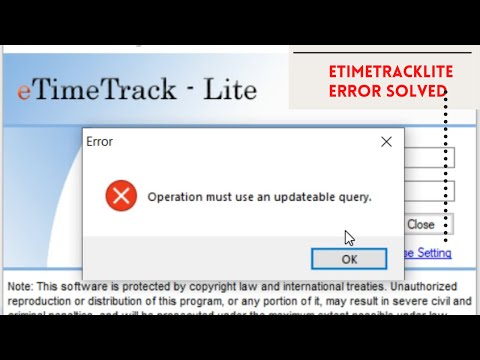
Found 6 images related to operation must use an updateable query theme





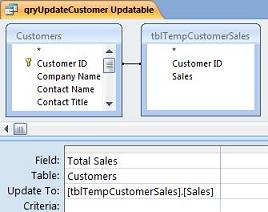
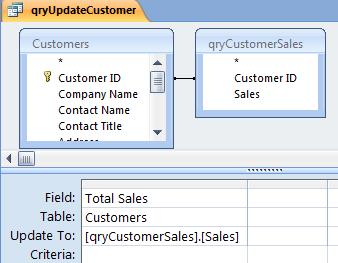

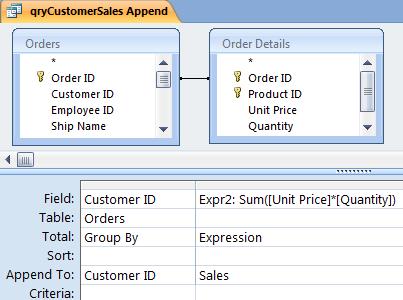

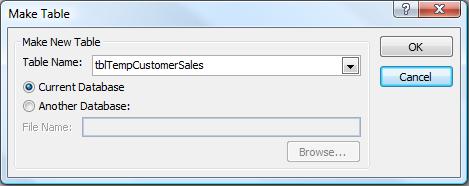
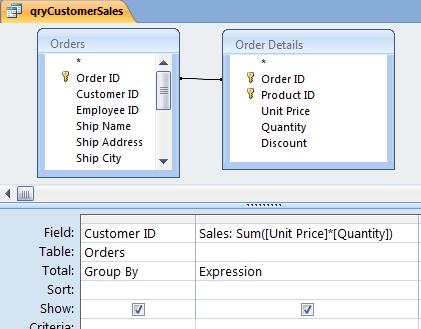
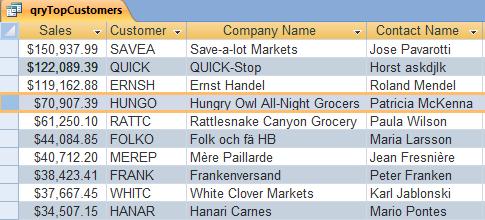


Article link: operation must use an updateable query.
Learn more about the topic operation must use an updateable query.
- “Operation must use an updateable query” error in MS Access
- What is “Operation Must Use an Updateable Query” and How …
- KB438615: “Operation must use an updateable query” error …
- Dealing with non-updateable queries in Microsoft Access
- Microsoft Access Update Query Examples, SQL Syntax, and Errors
- “Operation must use an updateable query” error when you run …
- Lỗi Operation must use an updateable | Diễn đàn Dân Kế Toán
- Dealing with non-updateable queries in Microsoft Access
- Thread: [RESOLVED] Operation Must Use an updateable Query
- KB438615: “Operation must use an updateable query” error …
- Attempting to run update query in MS Access to update a local …
- [Lỗi] operation must use an updateable query access
See more: nhanvietluanvan.com/luat-hoc